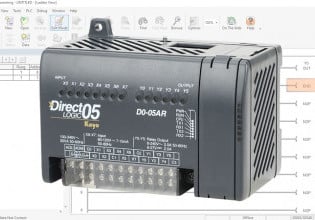P
I need a little guidance. specifically about the capabilities of using a micrologix 1400 for modbus comm.
i want to connect to around 50 devices using 2 no.s of ML1400 & then would need to transmit this data to Controllogix controllers through Eth/IP. i wanted to know what is the max. no of devices i can practically use with a ML1400.
how can i calculate the speed, delay & the rate of data transmission??
[email protected]
i want to connect to around 50 devices using 2 no.s of ML1400 & then would need to transmit this data to Controllogix controllers through Eth/IP. i wanted to know what is the max. no of devices i can practically use with a ML1400.
how can i calculate the speed, delay & the rate of data transmission??
[email protected]






